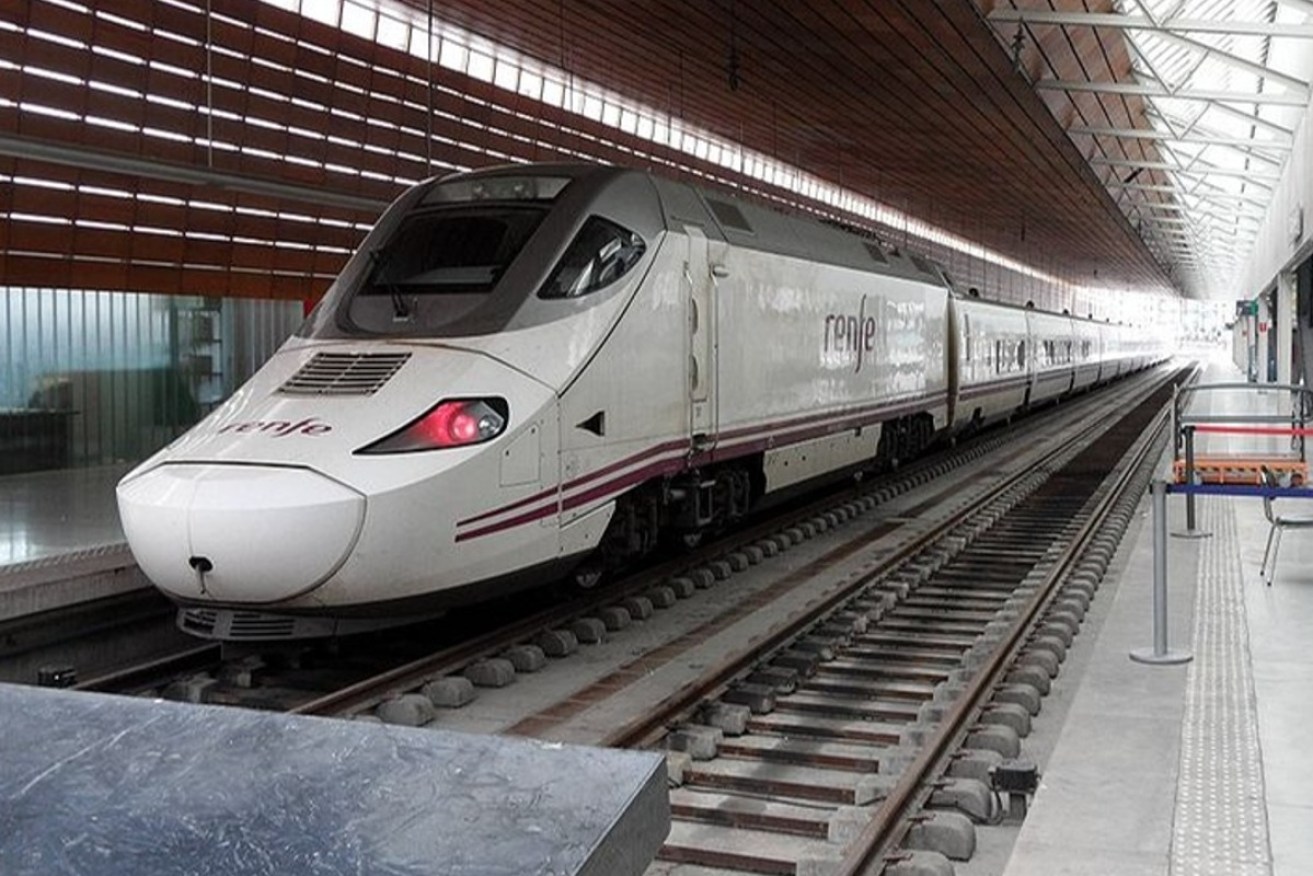New Mount Barker mass transit still on track despite go-slow on high-speed rail
A government business case examining mass transit options to Mount Barker and the Adelaide Hills is progressing despite doubt over a Spanish train manufacturer’s proposal for a high-speed rail trial.


A Talgo-made high speed train in Europe. Photo: Wikimedia Commons
Department for Infrastructure and Transport officials on Monday appeared before parliament’s Budget and Finance committee, where they were questioned about the delivery of new public transport services to the Adelaide Hills and the long-mooted prospect of reinstating passenger rail to Mount Barker.
It comes after Transport Minister Tom Koutsantonis raised doubt over the prospect of Spanish train manufacturers Talgo running a trial of passenger rail between Adelaide and Mount Barker, suggesting the company had misunderstood the brief.
Talgo, which specialises in manufacturing high-speed trains, believes it can run trains between Mount Barker and Adelaide within 45 minutes on the existing rail corridor – well below Infrastructure SA’s estimate of 71 minutes.
The Spanish company requested state government support for a rail trial in early 2022, which Labor supported.
But Department for Infrastructure and Transport CEO Jon Whelan, who met with Talgo executives in Spain last year, said the geography of the Adelaide Hills and “stringent” rail safety regulations in Australia had impacted progress on the trial.
He also said the rail line to Mount Barker was owned by the federal government’s Australian Rail Track Corporation (ARTC), which has set a 115km/h speed limit on the track.
“It would be fair to say that at that meeting, (Talgo) were surprised around that they wouldn’t be able to run a train in excess of 160 kilometres on that route to get the travel times that were being purported around the industry and around the state at that time,” Whelan said.
“What the government’s done is committed to running a trial and we’ll continue to help Talgo and ARTC to get to an arrangement, but it is not our track.
“(Talgo’s) whole bit is about running high speed rail across Australia, and they will need to run well in excess of 160km/h.”
Whelan said Talgo had gone back to the Spanish government to ask for more funding to run the trial after the initial cost of €3 million “increased significantly”.
“We are keen to see a trial succeed, but at the same time, it’s not our network, and it’s not our railway line and they have to satisfy the rail regulator and satisfy ARTC,” he said.
“South Australia commits itself on a very regulated and safe rail network, and potentially they didn’t realise the amount of rail regulations they had to satisfy to run a trial.”
The 55km rail corridor from Adelaide to Mount Barker does not take a direct route, with train speeds limited at some points to 25-40km/h on the winding track.
Infrastructure SA, the state government’s independent infrastructure assessment agency, estimated in 2022 that reinstating passenger trains on the existing rail corridor would cost $250 million, with a train journey time of 71 minutes.
The frequency of train services would also only be once every 30 minutes, according to the study, due to passenger trains having to share the track with freight trains.
Infrastructure SA instead recommended targeting investment towards improving bus services to the Adelaide Hills.
But the feasibility of passenger rail to Mount Barker is being re-examined by the state government through its Adelaide Hills Transport Study, which kicked off in November 2022.
“As part of that study, one of the key things we are going to do and have already commenced on is undertaking a business case for mass transit options to Mount Barker and to the Adelaide Hills,” said Andrew Excell, the Department’s executive director of transport planning and program development.
“Now that will obviously bring into the view of trains and or buses, so we’re looking at all methods of mass transit.”
Excell told the committee that rail consultants have already begun “working options” on track geometry and the potential interactions of passenger trains with freight.
He said the fact there was only one track on the rail corridor was one of the “bigger issues”.
“It is going to be hard work,” he said.
“ARTC operate freight across Australia. They come at different times through the Hills.
“We know there are freight issues with the rail through the Hills, so that’s what the business case is going to work on.
“It’s going back earlier and understanding what the issues and the problems are and then actually working towards what the solution is, rather than jumping to a solution.”
Building a new heavy rail corridor through the Adelaide Hills could cut the passenger rail commute to 37.5 minutes, according to the Infrastructure SA study – but would also cost $5.8 billion.
A new bus rapid transit system featuring a bus lane along Glen Osmond Road and the South Eastern Freeway could deliver similar travel times and better frequency for only $300 million, according to the 2022 study.
The state government announced last month it would spend $19 million to add 590 new bus services to the Adelaide Hills each week.
A government spokesperson said public feedback on the Hills Transport Study would be released “soon”.




